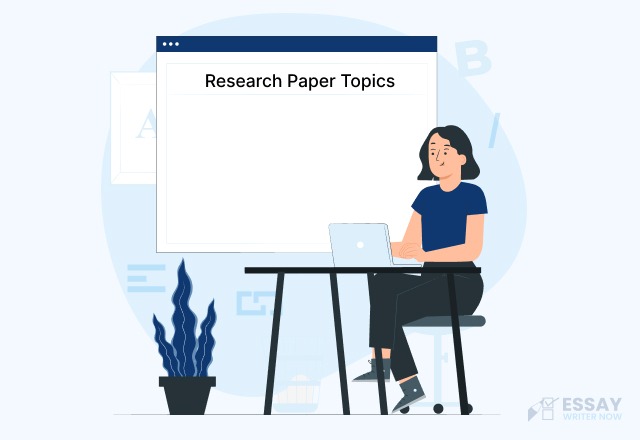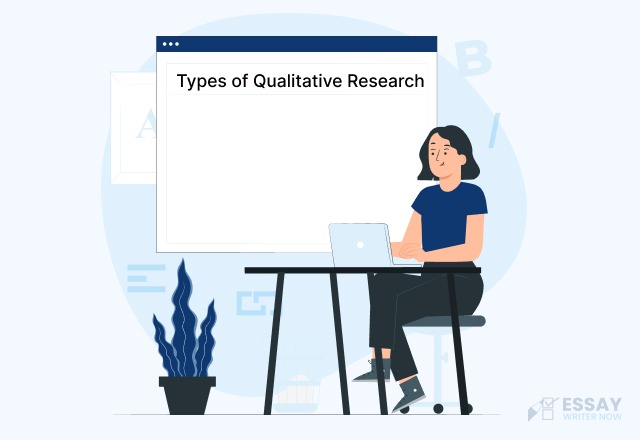Understanding the Assignment
Completing a research paper successfully means accomplishing the specific tasks set out for you. Before you start, make sure you thoroughly understand the assignment task sheet.
Importance of Clarity
Read the assignment sheet carefully. Look for anything confusing and clarify it with your professor. Identify the assignment goal, deadline, length specifications, formatting, and submission method. Creating a bulleted list of key points can help you stay organized and ensure you meet all the requirements. Carefully consider your timeframe and word limit: be realistic, and plan enough time to research, write, and edit.
Key Points to Note
- Assignment goal
- Deadline
- Length specifications
- Formatting
- Submission method
Actionable Tip: Create a bulleted list and cross off completed items to stay organized. This simple habit will help you manage your time and keep track of your progress.
Choosing a Research Paper Topic
Selecting a suitable topic is crucial as it sets the direction for your entire paper. There are many ways to generate an idea for a research paper, from brainstorming with pen and paper to talking it through with a fellow student or professor.
Generating Ideas
One effective method is free writing, which involves taking a broad topic and writing continuously for two or three minutes to identify anything relevant that could be interesting. Discussions with peers or professors can also spark new ideas.
Inspiration from Existing Research
Look at the discussion or recommendations sections of research papers for specific topics that require further examination. This can provide a foundation for your own research.
Once you have a broad subject area, narrow it down to choose a topic that interests you, meets the criteria of your assignment, and is possible to research. Aim for ideas that are both original and specific.
For Example: A paper following the chronology of World War II would not be original or specific enough. In contrast, a paper on the experience of Danish citizens living close to the German border during World War II would be specific and could be original enough.
Conducting Preliminary Research
Preliminary research is a crucial step that helps you understand the context of your topic and refine your focus. This stage is essential to lay a strong foundation for your research paper, allowing you to gather relevant information and understand the current state of research on your chosen subject.
Importance of Preliminary Research
Conducting thorough preliminary research is vital for several reasons. Firstly, it provides you with a broad understanding of the topic, which is essential before diving into more specific aspects. This stage helps you identify key themes, debates, and gaps in the existing literature. Additionally, preliminary research allows you to frame your research questions more effectively, ensuring they are relevant and researchable.
Utilizing a Variety of Sources
To get a comprehensive view of your topic, it's important to use a mix of sources, including journals, books, and reliable websites. Each type of source has its strengths:
- Journals offer peer-reviewed, up-to-date research findings.
- Books provide comprehensive overviews and in-depth analyses.
- Reliable websites can offer current data, expert opinions, and access to gray literature.
Including diverse sources ensures you capture various perspectives and do not miss any significant information. Moreover, looking for sources that contradict your point of view is crucial. This practice helps you develop a balanced argument and anticipate counterarguments.
Formulating Research Questions
Formulating clear research questions is a key part of the preliminary research process. These questions guide your focus and determine the direction of your study. To create effective research questions, complete the sentence: “I want to know how/what/why…” This approach helps you pinpoint specific aspects of your topic that need further exploration.
Selecting a Research Method
Both qualitative and quantitative research methods play an integral role during preliminary research. Understanding these methods can enhance the depth and scope of your research.
Qualitative Research
Qualitative research focuses on exploring phenomena through detailed, non-numeric data. It is particularly useful for gaining in-depth insights into people's behaviors, motivations, and experiences. When conducting preliminary research, qualitative methods can help you:
- Identify Patterns: Discover recurring themes and patterns in existing literature.
- Generate Ideas: Formulate new hypotheses or research questions based on detailed observations.
- Understand Context: Gain a comprehensive understanding of the social and cultural context related to your topic.
Quantitative Research
Quantitative research, on the other hand, involves the collection and analysis of numeric data to identify patterns, test hypotheses, and make predictions. This method is essential for:
- Measuring Variables: Quantifying relationships between different variables.
- Statistical Analysis: Using statistical tools to test the validity of your hypotheses.
- Generalizing Findings: Drawing broader conclusions that can be generalized to larger populations.
Combining Qualitative and Quantitative Approaches
In many research projects, combining qualitative and quantitative approaches provides a more comprehensive understanding of the topic. During preliminary research, you might use qualitative methods to explore the context and develop hypotheses, then employ quantitative methods to test these hypotheses and quantify findings. This mixed-methods approach enriches your research, offering both depth and breadth.
Example:
Suppose your research topic is the impact of social media on academic performance. You might start with qualitative research by conducting interviews with students to understand their social media usage patterns and perceptions. Based on these insights, you can develop specific hypotheses (e.g., the number of hours spent on social media negatively correlates with GPA) and test them using quantitative methods like surveys and statistical analysis.
Importance of a Balanced Approach
A balanced approach that incorporates both qualitative and quantitative research ensures that your study is well-rounded and credible. Different types of qualitative research provide the context and depth needed to understand complex issues, while quantitative research offers the precision and generalizability necessary for broader conclusions.
Writing an Abstract for a Research Paper
An abstract is a brief summary of your research paper that highlights the main points of your study. It is often the first section readers see, so it needs to effectively convey the essence of your research. Here's how to write an abstract:
Purpose of the Abstract
The abstract provides a quick overview of your research, allowing readers to understand the key elements of your paper without reading the entire document. It should give a snapshot of your research question, methods, results, and conclusions.
Key Components
Here are the key components of a perfect abstract for your research paper:
- Research Question: Start by stating the main research question or problem your paper addresses. This sets the stage for what your study aims to achieve.
- Methods: Briefly describe the methods or approach you used in your research. This might include the type of research (e.g., qualitative or quantitative), data collection techniques, or analytical methods.
- Results: Summarize the main findings or results of your study. Focus on the most significant outcomes and avoid including too much detail.
- Conclusion: Conclude the abstract with a brief statement about the implications or significance of your findings. This should highlight why your research matters and how it contributes to the field.
Writing Tips
Here are some tips you can follow to write an abstract:
- Be Concise: Abstracts are typically between 150-250 words. Ensure every word adds value and keeps the summary focused and to the point.
- Use Clear Language: Avoid jargon and complex vocabulary. The goal is to make your abstract accessible to a wide audience, including those who might not be familiar with your specific field.
- Write Last: It’s often easiest to write the abstract after you’ve completed the rest of your paper. This way, you’ll have a clear understanding of the key points to include.
Abstract Example
Here’s a simple example of what a research paper abstract might look like:
"This study explores the impact of remote work on employee productivity. Using a mixed-methods approach, we analyzed survey responses from 500 employees and conducted in-depth interviews with 20 managers. Our findings indicate that remote work generally increases productivity due to fewer office distractions and flexible work hours. However, challenges such as communication barriers and isolation were also identified. The study suggests that organizations should implement strategies to mitigate these challenges to maximize the benefits of remote work." |
Developing a Thesis Statement
Developing a thesis statement is one of the most critical steps in writing a research paper. This statement encapsulates your central argument and provides a roadmap for your paper, ensuring that all parts are cohesive and focused.
Characteristics of a Strong Thesis Statement
A well-crafted thesis statement should be:
- Concise: It should summarize your main argument in one or two sentences. Avoid unnecessary words and focus on conveying your core idea clearly and succinctly.
- Contentious: A good thesis statement presents a claim that requires further evidence or analysis. It should not be a simple statement of fact but rather an assertion that can be debated and supported with research.
- Coherent: Your thesis should be logically connected to every part of your paper. Each paragraph and section should relate back to and support your central argument, creating a cohesive narrative.
Crafting Your Thesis Statement
When crafting your thesis statement, consider the following steps:
- Start with a Research Question: If you began with a research question, your thesis statement should answer that question. For example, if your research question is, "How does social media use affect academic performance?" your thesis might be, "Excessive use of social media negatively impacts academic performance by reducing study time and increasing distractions."
- Refine Your Argument: As you conduct your research and gather evidence, refine your thesis statement to reflect your findings more accurately. Ensure that it is specific and focused, avoiding broad generalizations.
- Ensure Clarity and Specificity: Your thesis statement should be clear and specific. Avoid vague language and be precise about what your paper will argue. For example, instead of saying, "Social media affects students," say, "Excessive use of social media can lead to lower grades and decreased academic engagement among high school students."
- Make It Debatable: A strong thesis statement should invite discussion and differing opinions. For instance, "Homework is good for students" is a weak thesis because it is not debatable. A stronger thesis would be, "Homework improves student achievement by reinforcing classroom learning, but excessive amounts can lead to burnout and disengagement."
Examples of Strong Thesis Statements
- Historical Analysis: "The New Deal was a turning point in American history, marking a shift from laissez-faire economic policies to a more active government role in economic and social welfare."
- Literary Analysis: "In 'To Kill a Mockingbird,' Harper Lee uses the character of Atticus Finch to explore themes of morality, justice, and racial inequality in the American South."
- Scientific Research: "Climate change is primarily driven by human activities, including the burning of fossil fuels and deforestation, which have led to increased greenhouse gas emissions and global temperature rise."
Revising Your Thesis Statement
As you write your paper, revisit your thesis statement to ensure it still aligns with the content and direction of your research. It is common for your thesis to evolve as you explore your topic and use research discovery to uncover new insights. Be open to refining and adjusting your thesis to reflect the development of your argument accurately.
Creating a Research Paper Outline
Creating a detailed research paper outline is a crucial step in the writing process. An outline serves as a roadmap, guiding you through the writing process and ensuring that your paper is well-organized and coherent.
Steps to Create a Research Paper Outline
- Identify Key Sections: Begin by identifying the main sections of your paper, typically including the introduction, literature review, research methodology, results, discussion, and conclusion.
- Break Down Sections: Within each section, list the key topics and arguments you want to cover. For example, in the literature review, you might include subheadings for different themes or trends in the research.
- Detail Supporting Evidence: Under each subheading, note the specific evidence, data, or quotes you plan to use to support your arguments. This could include references to specific studies, statistical data, or theoretical frameworks.
- Create Headings and Subheadings: Use headings and subheadings to organize your outline. This helps to break down your paper into clear, distinct sections and makes it easier to follow.
- Include Transition Sentences: To ensure a natural writing style and smooth flow of ideas, include transition words and sentences between sections and paragraphs. These sentences help to link different parts of your paper and maintain coherence.
Example of a Research Paper Outline
I. Introduction
II. Literature Review
III. Methodology
IV. Results
V. Discussion
VI. Conclusion
|
Tips for Creating an Effective Outline
Here are some tips that you can follow to write an effective outline:
- Be Detailed: The more detailed your outline, the easier the writing process will be. Include as much information as possible under each heading.
- Stay Flexible: While an outline provides structure, be open to making adjustments as you write. Sometimes, new ideas or evidence may require you to revise your outline.
- Use Bullet Points: Bullet points make your outline clear and easy to follow. They help you organize your thoughts and ensure that you cover all key points.
- Refer Back to Your Thesis: Continuously refer back to your thesis statement to ensure that every section of your outline supports your central argument.
Benefits of an Outline
Dedicating time to create a thorough outline offers several benefits:
- Organized Structure: An outline helps you structure your paper logically, ensuring a smooth flow of ideas from the introduction to the conclusion.
- Focused Writing: By outlining your main points and supporting evidence, you stay focused on your thesis statement and avoid going off-topic.
- Efficient Process: With a clear plan in place, you can write more efficiently, as you know what to include in each section and how to transition between ideas.
- Reduced Overwhelm: Breaking down your paper into manageable sections makes the writing process less daunting and more approachable.
Writing the Introduction
The introduction of your research paper is crucial as it sets the tone for the rest of your work. It should address three fundamental questions: What, why, and how? By the end of your introduction, the reader should have a clear understanding of the paper’s topic, its significance, and the structure you will follow to present your arguments.
What: Define Your Topic
Begin by clearly stating the topic of your research paper. This involves introducing the main subject matter and providing any necessary background information. Defining key terms and concepts is essential to ensure that your readers understand the context of your research.
- Specific Topic: Clearly define what your paper is about. For instance, if you are writing about the impact of social media on mental health, specify whether you are focusing on a particular age group, type of social media, or aspect of mental health.
- Background Information: Provide a brief overview of the existing research and developments related to your topic. This helps to situate your study within the broader academic conversation.
Why: Explain the Importance
The "why" component addresses the significance of your research. You need to convince the reader that your study is worth their time and attention.
- Relevance: Explain why your topic is important. This could be due to its societal impact, its relevance to current events, or gaps in existing research that your study aims to fill.
- Originality: Highlight what new insights or contributions your research brings to the field. This could be a novel perspective, unique methodology, or new data that provides further understanding of the topic.
How: Outline the Structure
Provide a roadmap of how you will approach your topic. This gives the reader a preview of the paper's structure and the main points you will cover.
- Methodology: Briefly describe the methods you will use to conduct your research. This could include qualitative or quantitative approaches, data collection techniques, and analysis methods.
- Structure: Outline the main sections of your paper. This helps the reader understand the flow of your argument and what to expect in each section.
Purpose of the Introduction
The introduction serves multiple purposes:
- Engage the Reader: Capture the reader’s interest with a compelling opening statement or question.
- Provide Context: Give the necessary background information to understand the topic.
- Set Expectations: Clearly outline the structure and purpose of your paper.
Example Introduction
Here’s an example of an effective introduction for a research paper on the impact of social media on adolescent mental health:
"In recent years, social media has become an integral part of daily life, especially for adolescents. The pervasive nature of platforms like Instagram, Snapchat, and TikTok has raised concerns about their impact on mental health. This paper aims to explore the relationship between social media usage and mental health outcomes among teenagers. While previous studies have examined various aspects of this issue, there remains a significant gap in understanding the long-term effects. By analyzing recent data and conducting qualitative interviews, this research seeks to provide a comprehensive overview of how social media influences adolescent mental well-being. Ultimately, this study aims to contribute to the ongoing conversation by offering new insights and recommendations for mitigating negative impacts." |
Writing the Body
The body of your research paper is where you develop your arguments, present evidence, and engage with your sources. Organizing this information effectively is key to maintaining a coherent and persuasive narrative. This section will provide you with strategies to structure the body of your paper, ensuring clarity and logical flow.
Organization: Use the Outline as a Guide
Your outline serves as a roadmap for writing the body of your paper. However, be prepared to adapt and refine it as you write. The goal is to ensure that your information and arguments are presented logically and cohesively.
- Flexibility: While the outline is a useful guide, don’t be afraid to make adjustments. If a different order of sections makes more sense as you write, feel free to rearrange them.
- Consistency: Ensure that each section and paragraph aligns with your overall thesis statement and contributes to your argument.
Topic Sentences: Guide Your Reader
Each paragraph should begin with a clear topic sentence that indicates the main point of the paragraph. This helps guide your reader through your argument and maintains focus.
- Alignment with Thesis: Each topic sentence should relate back to your thesis statement, reinforcing your central argument.
- Logical Order: Ensure that the topic sentences follow a logical sequence, building on each other to develop your argument.
Transitions: Create Coherence and Flow
Transitions are essential for maintaining a smooth narrative. They help connect ideas and sections, making your paper easier to read and understand.
- Between Paragraphs: Use transitional phrases or sentences to link paragraphs, showing how they relate to each other and to the overall argument.
- Within Paragraphs: Ensure that sentences within a paragraph flow logically, with clear connections between ideas.
Example Body Paragraph
Here’s an example of a well-structured body paragraph:
"One significant impact of social media on adolescent mental health is the increase in anxiety and depression. A study by Smith et al. (2020) found that teenagers who spend more than three hours a day on social media are more likely to report feelings of anxiety and depression. This correlation can be attributed to several factors, including cyberbullying, social comparison, and the pressure to present a curated image online. For instance, a survey conducted by the Pew Research Center (2021) revealed that 60% of adolescents feel pressured to present themselves in a certain way on social media. These findings suggest that the pervasive nature of social media can contribute to mental health issues among teenagers." |
Writing the Conclusion
The conclusion of your research paper is your final opportunity to make a lasting impression on your reader. It should summarize your main points, reinforce your thesis, and suggest implications or areas for further research. A well-crafted conclusion provides a sense of closure and completeness to your paper.
Purpose of the Conclusion
The conclusion serves several important purposes:
- Summarize Key Points: Recap the main arguments and evidence presented in your paper.
- Reinforce Thesis: Emphasize how your research supports your thesis statement.
- Provide Closure: Give the reader a sense of finality and resolution.
Components of a Strong Conclusion
A strong conclusion should include the following elements:
- Restate the Thesis: Begin by restating your thesis statement in a slightly different way than you did in the introduction.
- Summarize Main Points: Briefly summarize the key points and arguments you made in the body of your paper.
- Discuss Implications: Highlight the broader implications of your findings. What do they mean for the field of study or society at large?
- Suggest Further Research: Mention any areas where further research is needed or questions that remain unanswered.
Example Conclusion
Here’s an example of an effective conclusion for a research paper on the impact of social media on adolescent mental health:
"In conclusion, this research highlights the significant impact of social media on adolescent mental health, particularly in relation to anxiety and depression. The findings indicate that excessive social media use can contribute to mental health issues due to factors such as cyberbullying, social comparison, and the pressure to present a curated image. These insights underscore the need for parents, educators, and policymakers to develop strategies to mitigate the negative effects of social media on teenagers. Future research should explore interventions that can help adolescents use social media in a healthier and more balanced way. By addressing these challenges, we can better support the mental well-being of the next generation." |
Citing Sources
Proper citation is crucial to avoid plagiarism and give credit to the original authors. Each time you use a source, make sure to take note of where the information came from. Accurate citation is essential for maintaining academic integrity and ensuring that readers can trace the origins of the information you present.
Importance of Citing Sources
Citing sources is vital for several reasons:
- Academic Integrity: Proper citation helps avoid plagiarism, which is a serious academic offense. It ensures that you acknowledge the original authors and their contributions.
- Credibility: Citations lend credibility to your work by demonstrating that your research is grounded in established studies and findings.
- Verification: Providing sources allows readers to verify the information and explore the original works for more in-depth understanding.
Methods for Citing Sources
To ensure proper citation:
- Track Sources: Keep detailed notes of all the sources you consult during your research. This includes books, journal articles, websites, and other materials.
- Consistent Format: Use a consistent citation style throughout your paper. This makes your work more professional and easier to read.
- In-Text Citations: Include in-text citations whenever you quote, paraphrase, or reference another work. This directs readers to the corresponding entry in your bibliography or reference list.
Tools for Citing Sources
Citation generators can be incredibly helpful in ensuring accuracy and saving time:
- Automatic Generation: These tools can automatically create citations in various styles, such as APA, MLA, and Chicago, based on the information you provide.
- Reference Management: They help you manage your references and build your bibliography as you go, reducing the risk of missing or incorrect citations.
Different Citation Styles
There are several citation styles, each with its own rules and conventions. Here are some of the most commonly used styles:
- APA:
- Used In: Psychology, education, and other social sciences.
- Format: Author(s). (Year). Title of the work. Publisher. DOI/URL.
- MLA:
- Used In: Literature, arts, and humanities.
- Format: Author(s). "Title of the Work." Title of the Collection, edited by Editor(s), Publisher, Year, Page range.
- Chicago:
- Used In: History and some humanities.
- Format:
- Notes and Bibliography: Author(s), Title of the Work (Place of publication: Publisher, Year), page number.
- Author-Date: Author(s). Year. Title of the Work. Place of publication: Publisher.
- Harvard:
- Used In: Various fields, particularly in the UK and Australia.
- Format: Author(s) (Year), Title of the Work, Publisher, Place of publication.
- ASA:
- Used In: Sociology.
- Format: Author(s). Year. Title of the Work. Publisher. DOI/URL.
- AMA:
- Used In: Medicine and health sciences.
- Format: Author(s). Title of the Work. Edition (if applicable). Publisher; Year.
- IEEE:
- Used In: Engineering and computer science.
- Format: Author(s), "Title of the Work," Title of the Journal, vol. number, no. number, pp. page range, Month Year.
- Oxford:
- Used In: Law.
- Format: Author(s), Title of the Work, Publisher, Place of publication, Year, Page number.
The Revision Process
Revising your research paper is a critical step to ensure clarity, coherence, and completeness. This process involves reviewing your work with a critical eye, making necessary adjustments, and refining your arguments and presentation.
Global Concerns
Start by addressing the overall structure and content of your paper:
- Assignment Requirements: Confirm that your paper meets all the requirements specified in your assignment sheet.
- Logical Organization: Ensure that your paper is logically organized, with clear transitions between sections and paragraphs.
- Alignment with Thesis: Check that each paragraph and section supports your thesis statement.
Fine-Grained Details
Next, focus on the finer details of your paper:
- Paragraph Structure: Verify that each paragraph has a clear topic sentence and that all sentences within the paragraph support that topic.
- Clarity and Precision: Make sure your writing is clear and precise. Remove any unnecessary words or jargon.
- Grammar and Style: Check for grammatical errors, proper use of transition words, and consistency in style and formatting.
Tools for Revision
Use available tools to aid the revision process:
- Proofreading Tools: Utilize AI-powered proofreading tools to catch errors and improve sentence structure.
- Citation Checkers: Ensure all citations are correctly formatted and complete.
- Feedback: Incorporate feedback from peers, professors, or professional editing services.
Research Paper Topics
Here are some research paper topics that you can use as a reference point when brainstorming for your next paper:
- The Impact of Social Media on Mental Health
- Effects of Climate Change on Coastal Ecosystems
- The Role of Artificial Intelligence in Modern Healthcare
- Strategies for Reducing Educational Inequality in Developing Countries
- The Influence of Remote Work on Employee Productivity and Work-Life Balance
- Ethical Implications of Genetic Engineering in Humans
- The Effects of Urbanization on Biodiversity
- Analysis of Renewable Energy Adoption in Different Countries
- The Impact of Dietary Habits on Cardiovascular Health
- The Role of Government Policy in Addressing Income Inequality
Writing the First Draft
Writing the first draft of your research paper is an essential step in the process. It involves translating your outline and research into a coherent narrative. While it can be intimidating, remember that the first draft is not about perfection but about getting your ideas down on paper.
Approach to Writing the First Draft
Here is the right approach you can follow to write the first draft for your research paper:
- Maintain Momentum:
- Focus on writing continuously without getting bogged down by minor errors or perfect phrasing. The goal at this stage is to get your thoughts on paper.
- Allow yourself to write freely, knowing that you will have opportunities to revise and polish your work later.
- Clear Organization:
- Follow the logical ordering of paragraphs and sentences as outlined. Ensure that each section flows naturally into the next, maintaining the structure you’ve planned.
- Use your outline as a roadmap, but be flexible and willing to adjust as needed.
- Clarity:
- Strive to express your ideas as clearly as possible. This clarity will help you understand your own points when you return to revise.
- Aim for straightforward language and concise explanations to communicate your arguments effectively.
Flexibility in the Writing Process
Write Sections in Any Order:
- Start with the section that feels most natural or easiest to you. Some writers prefer to begin with the introduction, while others might tackle the body paragraphs first.
- Use your outline as a guide but remain open to writing sections out of order if it helps you maintain momentum.
Keep Unused Material:
- Avoid deleting large sections of text. Instead, move them to a separate document. This way, you can revisit and potentially repurpose the material later.
- Sometimes, discarded ideas or passages can be valuable in a different context or for future revisions.
Expanding Your First Draft
Here are some steps you can follow to expand your first draft:
Developing Ideas:
- When writing your first draft, expand on each point in your outline by providing detailed explanations, examples, and supporting evidence.
- For instance, if your outline includes a point about the impact of social media on academic performance, delve into specific studies, present statistical data, and discuss real-world implications.
Balancing Evidence:
- Integrate a mix of qualitative and quantitative research to provide a comprehensive view of your topic. Qualitative data, such as interviews and case studies, can add depth and context. Quantitative data, like surveys and experiments, can offer measurable evidence.
- For example, if discussing social media’s impact, you might include qualitative anecdotes from students alongside quantitative data on grades and screen time.
Using Transitional Sentences:
- To ensure a natural flow, use transitional sentences between paragraphs and sections. These sentences help guide the reader through your argument and highlight the connections between different points.
- For example, after discussing the negative effects of social media, you might transition to a section on potential solutions with a sentence like, “While social media poses challenges to academic performance, there are several strategies that educators and students can implement to mitigate these effects.”
Example Paragraph
Let’s consider an example of a well-structured paragraph in your first draft:
George Orwell’s 1946 essay “Politics and the English Language” has had an enduring impact on thought about the relationship between politics and language. This impact is particularly evident in the various critical reviews and analyses that have referenced Orwell’s work in recent years. For instance, Mark Falcoff’s 2009 article in The National Review Online, “The Perversion of Language; or, Orwell Revisited,” closely examines the ambiguity built into political language, mirroring Orwell’s point-by-point analysis. Even 63 years after its publication, Orwell’s essay continues to be emulated by contemporary thinkers, illustrating its lasting influence on the discourse surrounding political language. |
In this paragraph:
- The main idea is clearly introduced and supported with specific examples.
- The paragraph maintains a logical flow, making it easy for the reader to follow the argument.
- The use of transitional phrases, like “This impact is particularly evident,” helps connect the sentences smoothly.
The Revision Process
Revising a research paper is a critical phase in the writing process that ensures your work is polished, coherent, and effective in conveying your research. This process can be divided into two main levels: global concerns and fine-grained details. Each level addresses different aspects of your paper, helping to enhance both its overall quality and precision.
Global Concerns: Big Picture Review
Global concerns involve evaluating the overall structure and content of your paper. This stage is about ensuring that your research paper effectively communicates your main arguments and meets the requirements of the assignment.
Assignment Completion
- Thorough Review: Begin by revisiting the assignment guidelines to confirm that all tasks have been completed. Check that you have addressed each component specified in the assignment sheet, including any specific questions or objectives.
- Checklist: Use a checklist to ensure that all requirements have been met, such as word count, formatting, and submission guidelines. This step helps in avoiding any omissions.
Logical Organization
- Coherent Structure: Assess the overall organization of your paper. Verify that your arguments are presented in a logical sequence, with each section building on the previous one.
- Flow of Ideas: Ensure that there is a smooth transition between sections and paragraphs. Each part of your paper should connect logically, guiding the reader through your argument.
Paragraph Alignment
- Consistency with Thesis: Check that each paragraph aligns with your thesis statement and contributes to your overall argument. Each paragraph should support your central claim and provide evidence or analysis relevant to your research question.
- Introduction and Conclusion: Ensure that the content of your body paragraphs reflects and supports the introduction and conclusion. Your introduction should set up what will be discussed, and your conclusion should tie back to the introduction, summarizing how your paper has addressed the research problem.
Fine-Grained Details: In-Depth Review
Fine-grained details focus on the specific elements of your writing, ensuring that each part is clear, concise, and correctly formatted.
Supporting Evidence
- Evidence Validation: Verify that each topic sentence is supported by appropriate evidence. This includes checking that your sources are credible, relevant, and accurately cited.
- Integration of Evidence: Ensure that evidence is integrated smoothly into your argument. Avoid lengthy quotations and instead paraphrase and summarize where appropriate, linking the evidence back to your main points.
Conciseness
- Removing Redundancies: Eliminate any redundant or repetitive information. Each sentence should contribute new insights or arguments.
- Focused Content: Make sure that every section of your paper is directly related to your thesis. Remove any content that does not advance your argument or support your research question.
Clarity
- Definition of Terms: Define any technical or specialized terms that may not be familiar to your audience. Ensure that your explanations are clear and accessible.
- Clear Explanations: Revisit complex sentences and ensure that they are straightforward. Aim for clarity and simplicity in your writing to avoid confusion.
Final Steps: Polishing Your Paper
Once you have addressed the global and fine-grained concerns, it's time for the final polishing of your paper.
Sentence Structure and Grammar
- Grammar Check: Use grammar-check tools or manual proofreading to correct any grammatical errors. Pay attention to subject-verb agreement, tense consistency, and punctuation.
- Sentence Flow: Review sentence structure to ensure it is varied and engaging. Avoid awkward phrasing and ensure that sentences flow logically from one to the next.
Formatting and Citation
- Formatting Guidelines: Ensure that your paper adheres to the formatting requirements of your chosen citation style (APA or MLA). This includes margins, font size, and spacing.
- Citation Style: Double-check that all citations and references are formatted correctly according to the required style. Verify in-text citations and ensure that your reference list is complete and correctly formatted.
In conclusion, writing a research paper requires careful planning, thorough research, and a commitment to clear and concise writing. By following the step-by-step guide outlined above, you can approach the research paper writing process with confidence and produce a well-structured, informative, and impactful paper.
Remember, the key is to start early, manage your time effectively, and don't hesitate to seek help from your professor, librarian, or writing center. With dedication and effort, you can produce a research paper that demonstrates your understanding of the topic and makes a valuable contribution to the field.












